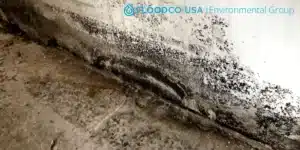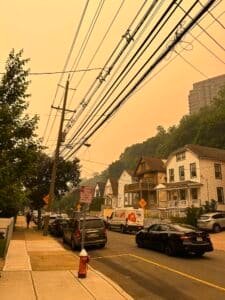Understanding the Dangers of Water Damage and Black Mold on Wood
Water damage is a common problem in homes and buildings, and it can lead to a variety of issues, including the growth of dangerous black mold on wood surfaces. Mold is a type of fungi that thrives in damp and humid environments, making it a common problem after water damage occurs. Black mold, also known as Stachybotrys chartarum, is particularly concerning as it can release harmful toxins and cause health issues. In this blog post, we will discuss the dangers of water damage and black mold on wood and how as a mold remediation contractor, you can effectively address these issues.
The Impact of Water Damage on Wood
Wood is a porous material, which means it can easily absorb water. When wood is exposed to excess moisture, it can become weakened, warped, and discolored. This not only affects the appearance of the wood but also its structural integrity. In severe cases, water damage can even lead to rotting of the wood, making it unsafe and unstable.
The Danger of Black Mold on Wood
When water damage occurs, the excess moisture creates the perfect environment for mold growth. As mold feeds on organic materials, it can quickly spread and colonize on wood surfaces. Black mold is particularly concerning as it produces mycotoxins, which can cause a variety of health issues, including respiratory problems, allergies, and even neurological symptoms. Exposure to black mold can be especially harmful to children, the elderly, and those with weakened immune systems.
Identifying Water Damage and Black Mold on Wood
As a mold remediation contractor, it’s essential to be able to identify water damage and black mold on wood surfaces. Some of the signs of water damage on wood include discoloration, warping, and a musty odor. You may also notice peeling or bubbling paint, which could be a sign of water damage beneath the surface. When it comes to black mold, it typically appears as dark green or black spots on the wood surface.
Checking for Water Damage Underneath Sink Cabinets
One common area where water damage and black mold can occur is under sink cabinets. This is because any leaks from the sink or pipes can go unnoticed for extended periods, leading to water damage and mold growth. As a mold remediation contractor, it’s crucial to check under sink cabinets for any signs of water damage or mold growth. Look out for discoloration, warping, and a musty odor, and if you suspect water damage, be sure to address it promptly.
Effective Water Damage and Mold Remediation Techniques
When it comes to addressing water damage and black mold on wood surfaces, it’s essential to act quickly to prevent further damage and potential health hazards. Here are some effective techniques for water damage and mold remediation:
1. Identify and Fix the Source of Water
The first step in addressing water damage and mold is to identify and fix the source of water. This could be a leaky pipe, a damaged roof, or improper drainage. Once the source is fixed, you can move on to addressing the damage and mold growth.
2. Dry Out the Affected Area
To prevent further mold growth, it’s crucial to dry out the affected area. This can be done using specialized equipment such as dehumidifiers, fans, and heaters. You may also need to remove any wet materials, including drywall or carpet, to facilitate the drying process.
3. Clean and Disinfect the Area
To effectively address black mold, it’s crucial to clean and disinfect the affected area. This involves using specialized cleaners and disinfectants designed to kill mold and remove any mold spores. Be sure to wear protective gear while cleaning to avoid any potential health hazards.
4. Seal and Replace Damaged Wood
If the wood has been severely damaged by water and mold, it may need to be replaced. In some cases, you may be able to sand and seal the wood to prevent further damage. However, if the wood is rotting or crumbling, it’s best to replace it entirely.
Final Thoughts
As a mold remediation contractor, it’s essential to understand the dangers of water damage and black mold on wood surfaces. By being able to identify and effectively address these issues, you can help protect your clients’ health and restore the affected areas. Remember to act quickly and use the proper techniques to ensure a successful remediation process. And most importantly, always prioritize safety by wearing proper protective gear and following all necessary precautions.



